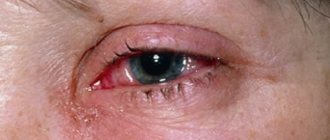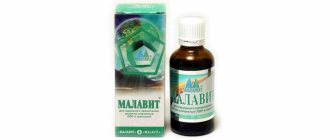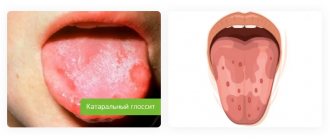Sore throat is the most common complaint when visiting a general practitioner or ENT doctor. So common that patients no longer take it seriously. But in vain: ignoring the symptoms can lead to the development of serious complications even with a mild cold. In order not to fall out of life for a long time, it is necessary to correctly determine the cause of a sore throat and know what measures can be taken. We'll talk about this in the article.
Discomfort in the throat Sore throat is a common companion to colds. What can help? THERE ARE CONTRAINDICATIONS. YOU MUST CONSULT A SPECIALIST
Causes of inflammatory processes
Many people associate the cold season with outbreaks of infectious diseases and an increased likelihood of falling home sick. And indeed: hypothermia, reduced immunity and vitamin deficiency, which are characteristic of this time, significantly undermine the protective functions of the body. But in fact, infections are far from the only cause of inflammation in the throat. Let's look at the main ones.
Infectious diseases of various etiologies
The most common cause of pain. They can be caused by bacteria, viruses and even fungi. The causative agent and localization of the infectious process influence the characteristics of the clinical picture and approaches to treatment.
ARVI (acute respiratory viral infection)
ARVI (acute respiratory viral infection) is a wide group of clinically and morphologically similar diseases caused by viruses. The most common pathogens of ARVI are: rhinovirus, adenovirus, influenza virus, parainfluenza and others - more than 200 variants in total. An adult experiences one of the forms of ARVI about two or three times a year. Depending on the pathogen and the characteristics of the immune system, the clinical picture may vary somewhat, but the main signs remain inflammation of the throat mucosa with catarrhal symptoms (redness, pain and sore throat, runny nose, coughing, sneezing), as well as weakness, fever, and headache.
On a note
ARVI accounts for more than 90% of all infectious diseases[1]. Every year, up to 41.2 million cases of ARVI are registered in Russia. They are the cause of almost 40% of incapacity for work on sick leave for workers[2].
Pharyngitis
Pharyngitis is an inflammatory disease of the pharynx that occurs under the influence of viral, bacterial (streptococcus, staphylococcus) and fungal (candida) infections. The development of pharyngitis is also influenced by unfavorable climatic factors, inhalation of polluted air, injuries and allergies. The clinical picture of pharyngitis includes intense hyperemia (redness) of the pharyngeal mucosa, pain and sore throat, cough, and low-grade fever. There are acute and chronic courses. The chronic form develops after an untreated acute form, due to frequent infectious and inflammatory diseases, smoking and poor environmental conditions. The symptoms of chronic pharyngitis are more smoothed out, but during exacerbations they become the same as in the acute form.
The benefits of gargling Gargling with an antimicrobial solution can relieve inflammation and relieve pain. More details THERE ARE CONTRAINDICATIONS. YOU MUST CONSULT A SPECIALIST
Tonsillitis
Tonsillitis is an infectious and inflammatory disease of the pharyngeal tonsils. The main cause is bacteria, but viral and fungal pathogens also occur. There is an acute onset with severe pain in the throat, aggravated by swallowing. The process is limited to the lacunae of the tonsils or spreads to the lymphoid and other surrounding tissues. Affected tonsils have a loose appearance with purulent plugs. Lymphadenitis and signs of intoxication may occur. An untreated acute form sometimes becomes chronic and can cause serious complications such as peritonsillar abscess, kidney disease, heart disease and collagenosis.
Laryngitis
Laryngitis is an inflammation of the larynx that occurs against the background of colds and infectious diseases, hypothermia, polluted air or overstrain of the larynx. In the clinic, inflammation of the laryngeal mucosa is severe, hyperemia and tissue infiltration are visible. All this is accompanied by soreness, dry throat, debilitating “barking” cough, hoarseness, and signs of intoxication.
It is important!
Due to anatomical features, young children may develop a dangerous variant of laryngitis - false croup. This is an obstructive form that requires emergency hospitalization of the child, not in the ENT department, but in the intensive care unit or intensive care unit [3]. Due to severe swelling, the lumen of the larynx is greatly narrowed, which leads to severe difficulty breathing. It is necessary to immediately take the child to the hospital or call emergency services.
Tracheitis
Tracheitis is an inflammatory process in the trachea. The etiology is the same as for previous diseases. Often combined with laryngitis (laryngotracheitis). A paroxysmal cough (usually dry) occurs, especially with deep inhalations and exhalations, which prevents you from breathing “fully.” Other symptoms are also observed: pain in the throat, chest and muscles, voice loss, fever, and so on.
Tumor diseases
Tumor diseases of the pharynx and larynx develop gradually and may not make themselves felt at first. As the tumor grows, sensations arise that can be confused with symptoms of infectious diseases: changes in the timbre of the voice, discomfort when swallowing (especially solid food), sore throat, hemoptysis, difficulty breathing. You need to know that with colds, these manifestations rarely last more than two weeks. In any case, you should not delay a visit to the doctor, but if you decide to treat yourself, and the symptoms have lasted for three or more weeks, then you need to see a specialist urgently. Common symptoms include weakness, malaise, and weight loss.
Stomatitis
A common infectious and inflammatory disease of the oral mucosa, which often occurs against the background of reduced immunity, poor hygiene, accidental injuries when eating, or wearing low-quality dentures. Depending on the nature of the damaging factor, viral, bacterial, fungal and chemical stomatitis are distinguished. Redness, pustules, blisters, plaques and erosions appear on the mucous membrane. Typically, foci of stomatitis are localized on the inside of the lips, cheeks and under the tongue, but the process can spread to the palate and tonsils. All this is accompanied by painful sensations. Systemic phenomena are usually not observed.
There are three forms of chronic pharyngitis:
1. Catarrhal.
In this case, inflammation of the pharyngeal mucosa does not in any way change the structure of its tissues. Usually this form develops in the initial stages of chronic pharyngitis.
3. Atrophic.
With this disorder, the mucous membrane of the pharynx becomes thinner and thinner over time, and its secretory function suffers. This form of pharyngitis is especially dangerous for the development of various infectious complications, since it is now much easier for pathogenic microorganisms to attach to epithelial cells that are not protected by mucus. Atrophic pharyngitis is characteristic primarily of smokers.
3. Hypertrophic.
Here, inflammation primarily affects the lymphoid tissue on the back wall of the pharynx, causing it to become red, overgrown, and swollen. There may also be an increase in the size of the tonsils and lymph nodes located in the neck.
How to treat inflammation of the larynx
It is important to know as much as possible about how to relieve a sore throat, because this condition occurs everywhere. If you take timely measures, you can not only prevent complications, but also “strangle the infection in the bud”, avoiding long suffering with high fever and debilitating cough. Today there are many ways available to alleviate your condition and return to your normal lifestyle as soon as possible.
The remedy for treating throat diseases “Furacilin” is a well-known antimicrobial agent that can be purchased at an affordable price. More about the drug THERE ARE CONTRAINDICATIONS. YOU MUST CONSULT A SPECIALIST
Symptomatic remedies
Drink plenty of warm drinks
An infectious disease is always an intoxication of the body, and sufficient fluid intake helps to cope with it. But don’t get carried away: 30 ml per 1 kg of your own weight is enough. It should be remembered that too hot drinks will have an additional irritating effect. It is enough that the temperature of the liquid consumed is slightly higher than body temperature.
Tablets for pain in the goal
A symptomatic remedy against inflammation of the throat: it allows you to relieve discomfort in it, as well as “wash” the affected area a little.
Antiviral drugs
Aerosols and sprays
Modern forms that are actively used in medical practice as effective remedies for sore throat. Special micro-sprays help to evenly distribute the drug in precise dosage and avoid side effects during parenteral use. The small particle size ensures a high degree of penetration even into hard-to-reach places. For example, some drugs based on interferon alpha-2b are produced in this form.
Rinses
One of the most effective and proven methods that allows you to obtain an antiviral, antiseptic and disinfectant effect. You cannot do without rinsing when treating severe inflammation of the throat and tonsils. It has a symptomatic effect and fights the pathogen. You can use folk remedies (soda, herbs with an antibacterial effect - chamomile, sage, calendula), products with an antiseptic effect (Miramistin, Hexetidine). In addition, drugs with a direct antimicrobial effect, such as nitrofural, are now available in the form of rinses.
Using effervescent tablets "Furacilin Avexima" you can easily prepare a solution for gargling More about the drug THERE ARE CONTRAINDICATIONS. YOU MUST CONSULT A SPECIALIST
Powders and tablets for sore throat
Oral medications allow for a systemic effect on the body. Analogues of special enzymes - purine nucleosides, which are necessary for all living things for rapid cellular growth - fight viruses. Artificially synthesized nucleosides with changes made to their molecule are mistaken by viruses for natural ones, absorbed and included in the viral DNA chain, causing chain termination. Other substances, such as rimantadine, seem to inhibit (suppress) the release of viral DNA in the human cell. And, for example, the substance umifenovir blocks the fusion of the lipid membrane of the virus and cell membranes. All these biochemical mechanisms prevent the replication (multiplication) of the virus inside a human cell.
Systemic antibiotics
The target of antibiotics is bacterial flora. They are not effective against viruses. To avoid side effects, toxic effects and addiction of microorganisms due to the uncontrolled use of antibiotics, they should be taken only in strict accordance with the prescriptions of the attending physician.
So, at the beginning of the disease, local therapy may be sufficient: symptomatic remedies and rinses. But you should not delay treatment, so as not to aggravate the development of the infection. In more severe cases, you will have to resort to complex therapy: antiviral agents or antibiotics for oral administration (depending on the pathogen) in combination with local therapy. It is recommended to alternate rinsing with taking tablets for sore throat and using aerosols.
Furacilin Avexima 20 mg No. 10, effervescent tablets
Furacilin Avexima acts on the cause of a sore throat - it destroys pathogenic bacteria. Removes germs and inflammatory plaque.
From 104 ₽
More details
THERE ARE CONTRAINDICATIONS. YOU SHOULD CONSULT WITH A SPECIALIST.
Recommendations for the occurrence of pharyngitis in adults and children
Soreness and dryness, as the first symptoms of an acute inflammatory process, can be alleviated:
- drinking plenty of warm liquids;
- rinsing with saline solutions or antiseptics;
- using painkillers in the form of lozenges;
- active humidification of the air in the room.
Uncomplicated acute pharyngitis does not always require medical intervention. With the right approach, you can independently cope with the symptoms and achieve a full recovery. But the absolute criterion for visiting a doctor, especially when treating pharyngitis in children, is the appearance of respiratory problems.
If inflammatory symptoms do not subside within 48 hours, and after starting active therapy you notice an increase in pain, you should also contact an otolaryngologist. If intensive treatment measures are not taken in a timely manner, the risk of developing serious complications increases. Inflammation of the trachea, middle ear or bronchial tree, as well as purulent abscesses on the tonsils or in the retropharyngeal space will require surgical intervention.
Preventive measures
The best way to combat inflammation of the throat and larynx is to prevent the development of the disease. It's impossible to protect yourself from everything, but your risk of infection will be greatly reduced if you follow these tips.
- Quitting smoking:
smokers are more susceptible to colds, since cigarette smoke reduces local immunity and is an additional irritant, and nicotine constricts blood vessels, interfering with blood supply to the lesions. - Healthy diet:
spicy, fried and highly salted foods irritate the mucous membranes and increase swelling, and also create additional stress on the gastrointestinal tract. You should balance your diet by adding more foods high in vitamins. - Air humidification:
relative air humidity should be 50–70%. Dry air significantly increases the risk of complications and prevents the body from fighting infections. This is especially important for children who are at risk of developing false croup. - Ventilation
will reduce the concentration of microbes in the air and normalize the microclimate. But you shouldn’t keep the windows ajar all the time, creating drafts and the risk of unnoticed hypothermia. In cold weather, you need to ventilate by opening the windows wide several times a day, but only for three minutes, so that most of the air volume is renewed. - Maintaining hygiene
means thoroughly washing your hands, using disinfectants, frequently changing bed linen, avoiding contact with coughing and sneezing people, etc.
When to go to the doctor?
Take your child to the doctor if your child's sore throat does not go away after breakfast.
Call an ambulance immediately if:
- the child has difficulty breathing;
- he cannot swallow;
- The infant is drooling unusually, which may indicate an inability to swallow saliva.
If an adult has pharyngitis, visit a doctor in the following cases:
- severe or prolonged (more than a week) sore throat;
- throat hurts often;
- difficulty breathing, swallowing, or opening your mouth;
- earache;
- joint pain;
- rash;
- fever above 38.3 for more than three days;
- blood in saliva or sputum;
- pain when turning the head;
- nodes and tumors in the neck;
- Hoarseness, hoarseness lasts more than two weeks.











